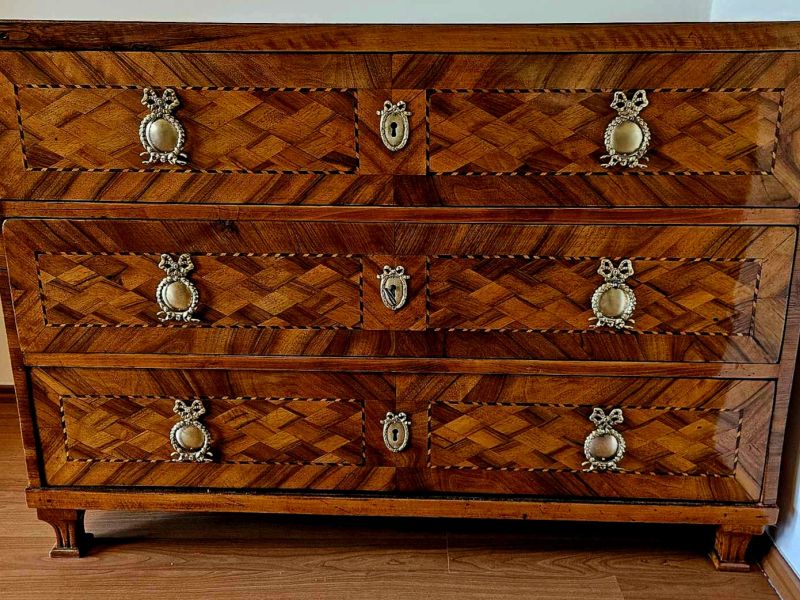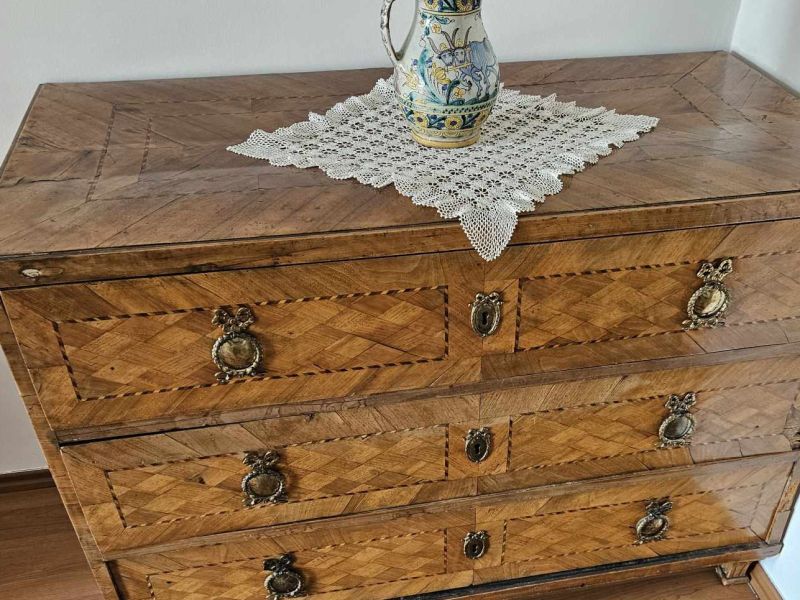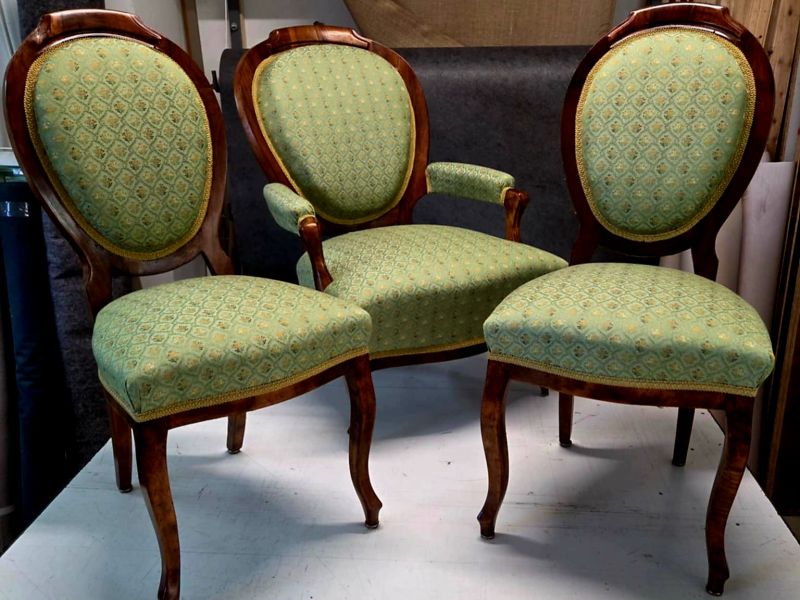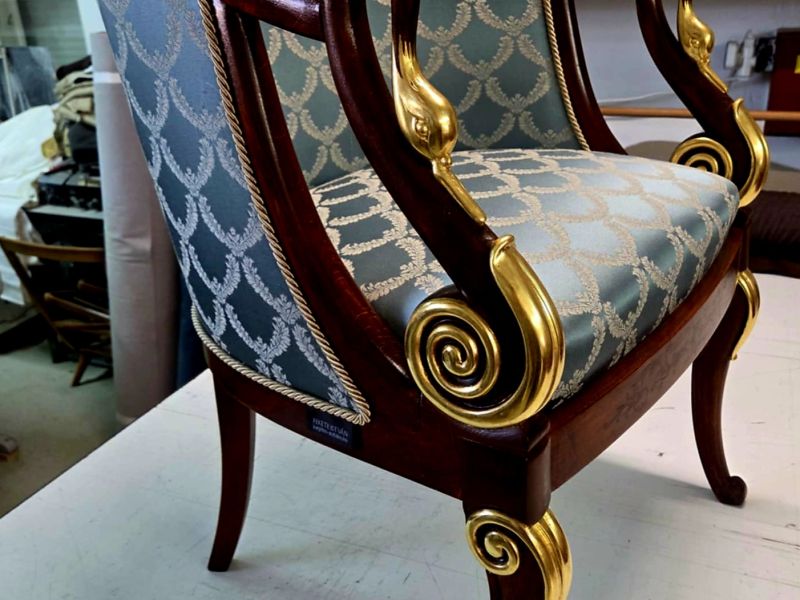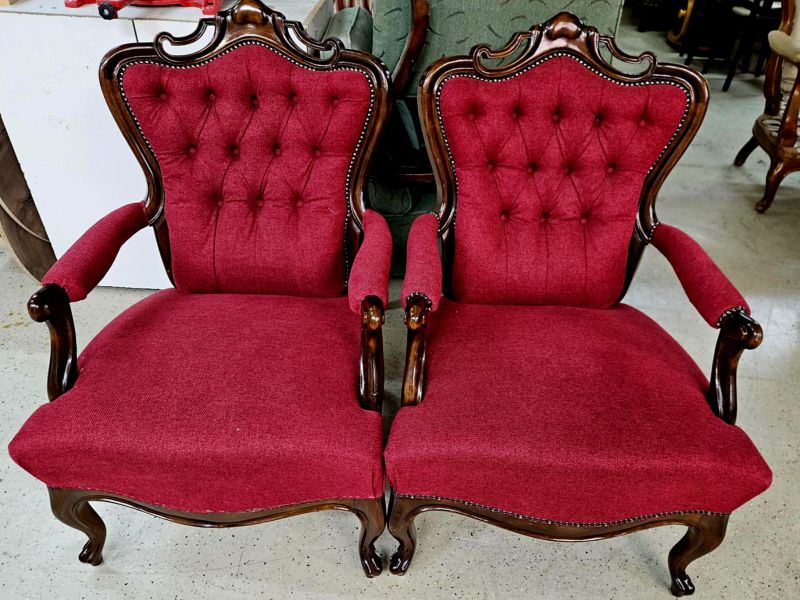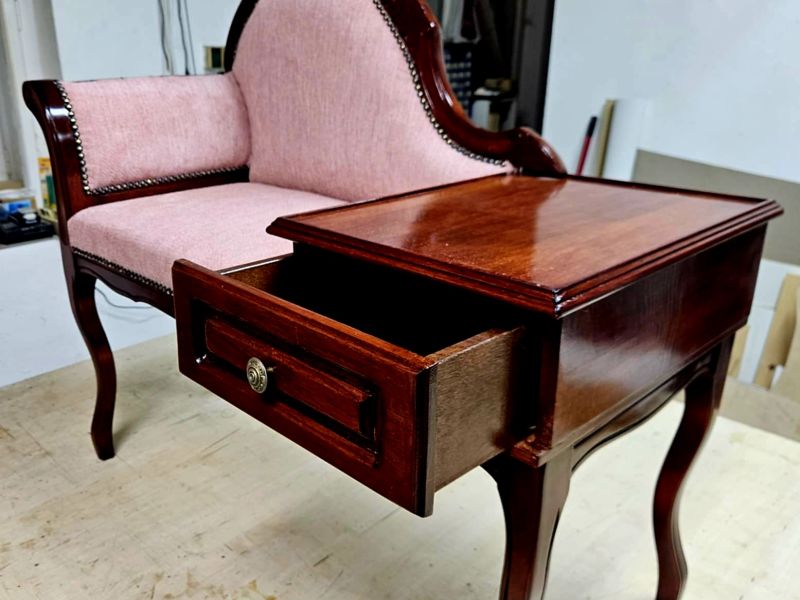The late 18th century was a period of sophisticated furniture craftsmanship. This Copf-style chest of drawers, made around 1780, is a fine example of the period furniture. With its three elegantly proportioned drawers, this piece embodies the transition from the Rococo to the Neoclassical style, aesthetic, characterised by clean lines, restrained decoration and symmetry.
Crafted by skilled artisans, the sideboard bears the hallmarks of expert joinery and fine woodworking, original craftsmanship. (At the time, Hungarian master carpenters followed the German example of furniture making, but let us not forget that the style has French roots. Btw., most of this furniture from the Monarchy dates from the reign of Emperor Joseph II, and the style is also commonly named after the Emperor.) The sideboard is made of walnut (walnut 'svartni', that is a thick veneer), which is highly prized for its durability and attractive grainy look. The drawers are so called swallow-tailed: this is a technique that not only provides a strong corner joint, but also shows the meticulous attention to detail typical of the period.
On one hand, the furniture is decorated with delicate inlays and 'svartnis', which create sharply contrasting geometric patterns, and on the other hand, the brass keyholes (which give a somewhat eclectic rococo appearance) provide both functionality and decorative ornamentation.
Restoring such an antique piece requires a thorough knowledge of historical joinery techniques and a commitment to preserving the authenticity of the piece. In such cases, the first task is always to identify structural weaknesses such as loose joints, warped parts or damaged mouldings. Each piece is gently cleaned with a mixture of mild detergent and distilled water, removing any dirt that has accumulated over the centuries without damaging the original finish. Missing or damaged veneers were meticulously replaced with materials appropriate to the age, and loose parts were glued to ensure a seamless fit with existing surfaces. After structural repairs, the surface was lightly sanded to remove minor scratches and imperfections, then polished evenly to enhance the natural beauty of the wood and provide a protective layer. Fortunately, the owner of the furniture took great care of this beautiful piece, so with some cleaning and polishing, the original brass was quickly restored to its original shine. The keyholes and locks were oiled and adjusted to work perfectly.
At every step of the way, we worked to ensure that this historic piece not only has a history, but also a future. I always feel that we are trying to prepare these pieces of furniture for something, that we will never fully experience ourselves, but our children and grandchildren will be able to enjoy for many years to come. In this way, a piece of furniture can bridge the gap between past and future through the art of timeless elegance and enduring craftsmanship.



